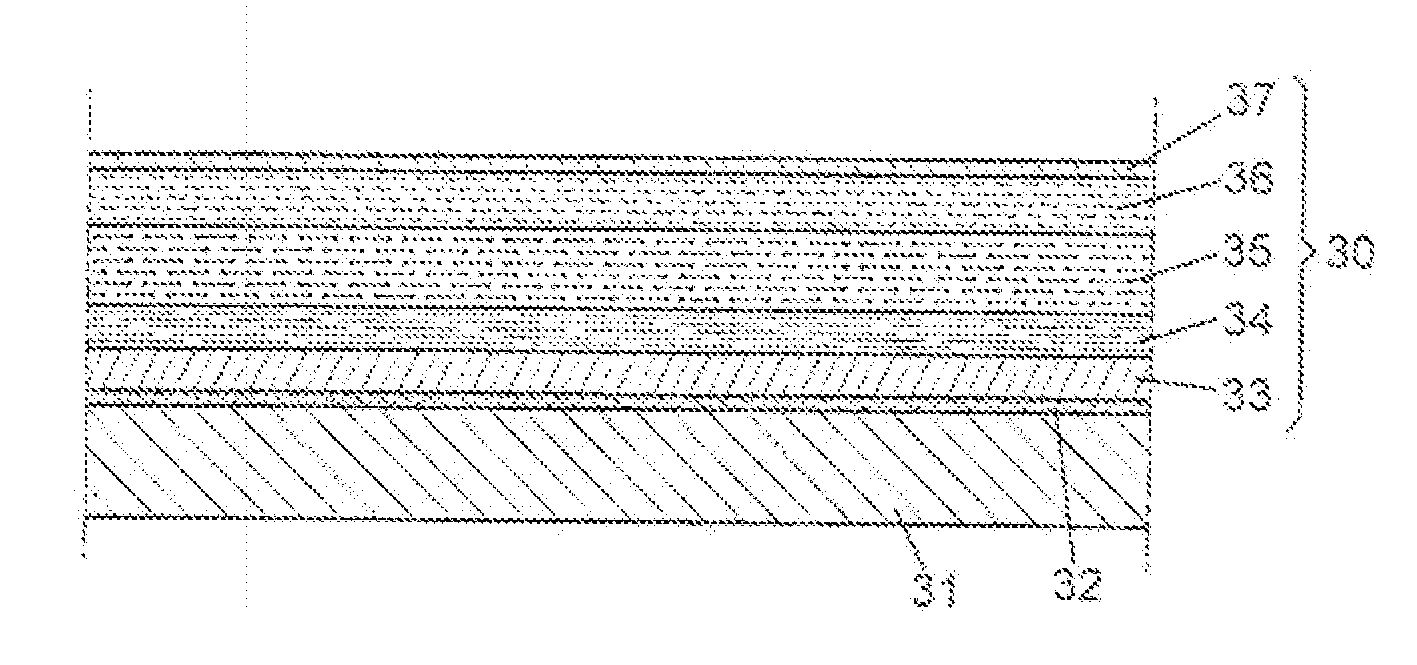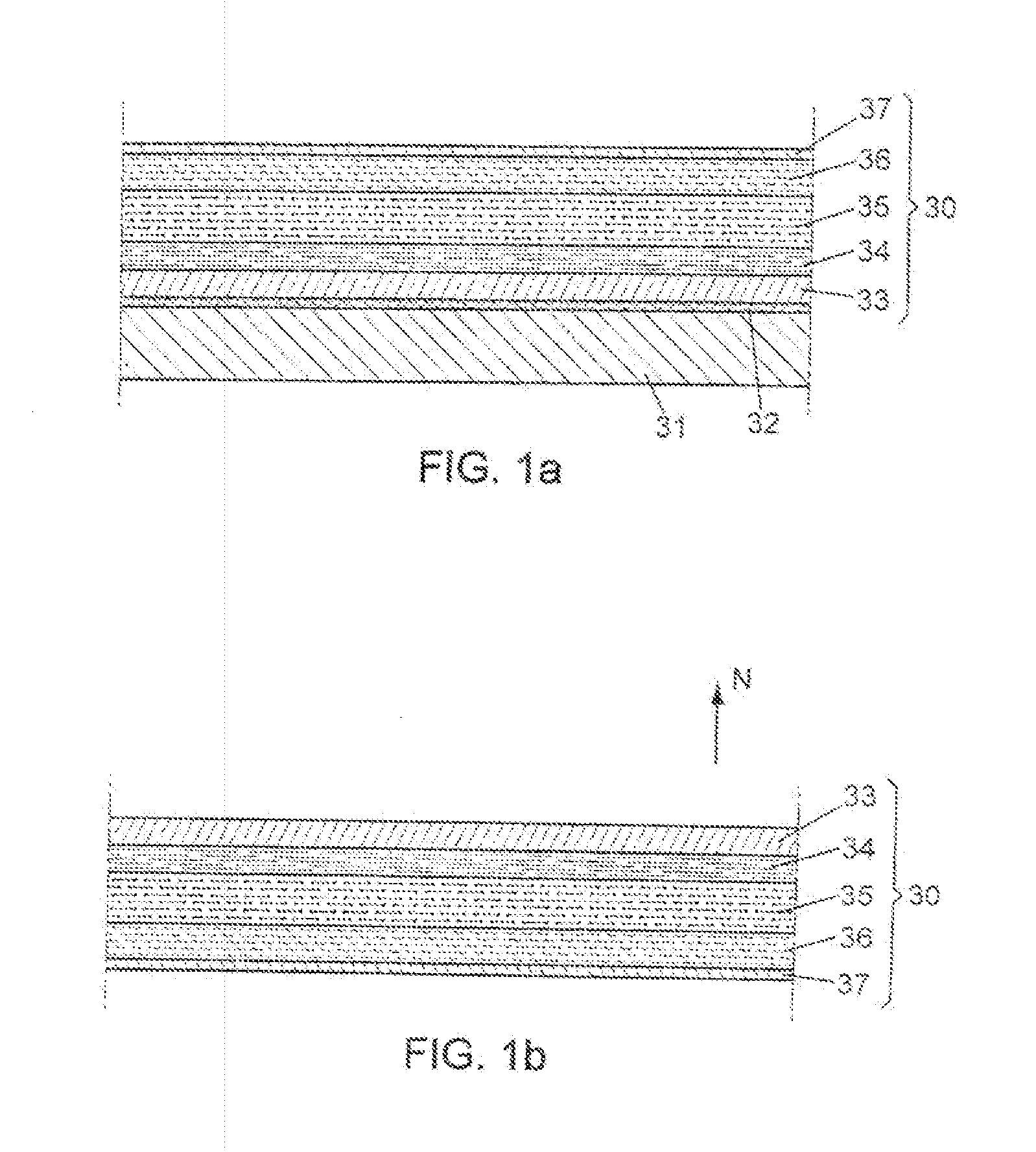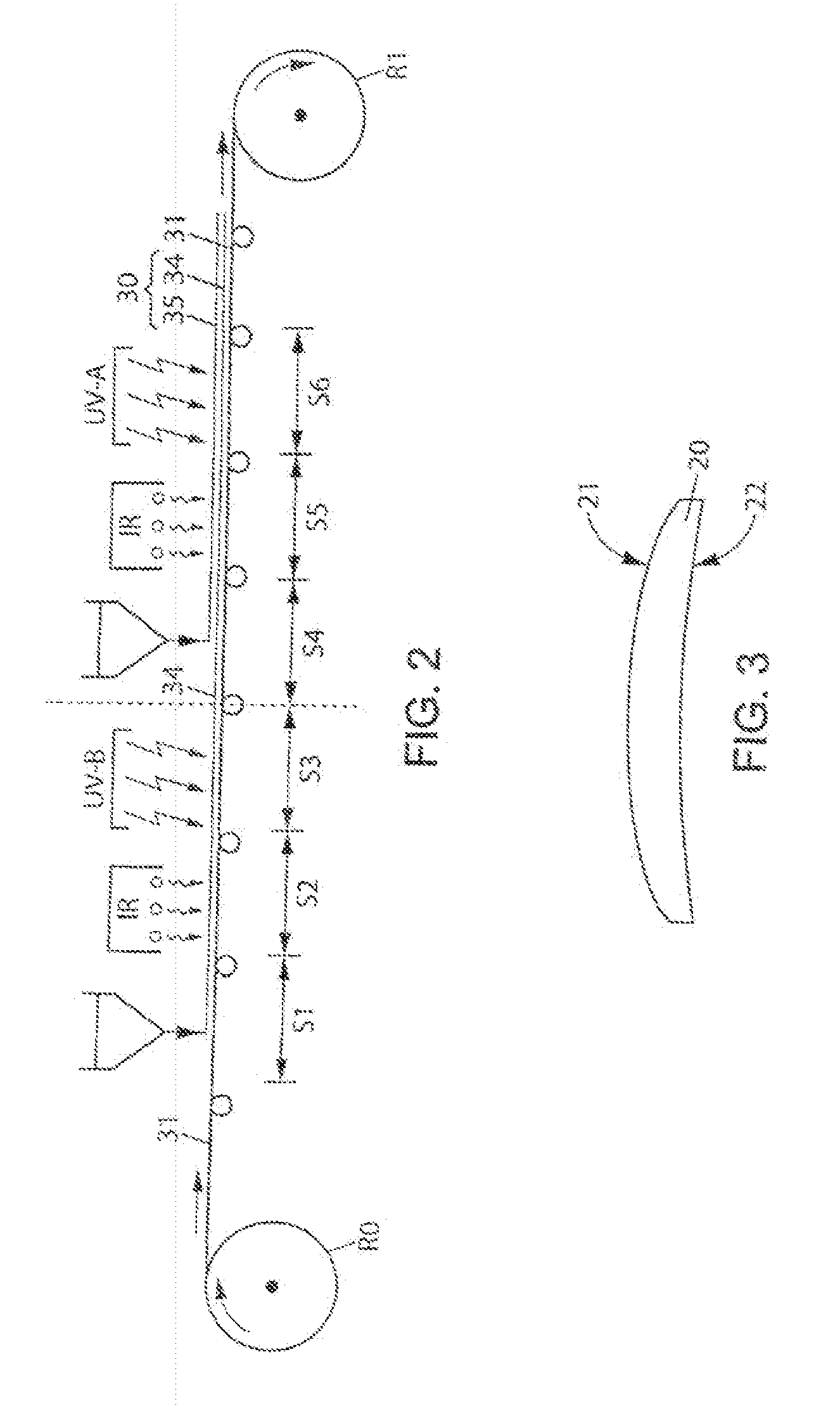Method for Producing a Polarizing Optical Element
a technology of polarizing optical elements and polarizing films, which is applied in the direction of coatings, coatings, applications, etc., can solve the problems of involuntarily, inability to reproduce, and involuntarily modify the color and polarizing effectiveness of the polarizing film, so as to achieve simple and inexpensive bonding
- Summary
- Abstract
- Description
- Claims
- Application Information
AI Technical Summary
Benefits of technology
Problems solved by technology
Method used
Image
Examples
Embodiment Construction
[0054] In accordance with FIG. 1a, a multilayer structure 30 is borne by a support 31. The support 31 is chosen from the materials having a surface energy that is between 25 mN / m (millinewtons per meter) and 40 mN / m. Among these materials, mention may be made by way of indication and nonlimitingly, of branched or linear polyethylenes, poly(ethylene-co-acrylic acid)s of which the percentage is mols of acrylic acid is less than or equal to 2, polyethylene-co-polypropylenes, poly(ethylene-co-vinyl acetate)s, polyisobutenes, polyisoprenes, poly(4-methyl-1-pentene)s, polypropylenes, poly(2-methylstyrene)s, polystyrenes, poly(styrene-co-acylonitrile)s, poly(styrene-co-2,2,3,3-tetrafluoropropyl methacrylate)s, polychlorotrifluoroethylenes, poly(chlorotrifluoroethylene-co-tetrafluoroethylene)s, poly(tetrafluoroethylene-co-ethylene)s, polytrifluoroethylenes, polyvinyl chlorides, polyvinyl fluorides, polyvinylidene fluorides, polyvinyl acetates, polyvinyl (alkyl)oates, polyvinyl alcohols, pol...
PUM
| Property | Measurement | Unit |
|---|---|---|
| thickness | aaaaa | aaaaa |
| thickness | aaaaa | aaaaa |
| thickness | aaaaa | aaaaa |
Abstract
Description
Claims
Application Information
 Login to View More
Login to View More - R&D
- Intellectual Property
- Life Sciences
- Materials
- Tech Scout
- Unparalleled Data Quality
- Higher Quality Content
- 60% Fewer Hallucinations
Browse by: Latest US Patents, China's latest patents, Technical Efficacy Thesaurus, Application Domain, Technology Topic, Popular Technical Reports.
© 2025 PatSnap. All rights reserved.Legal|Privacy policy|Modern Slavery Act Transparency Statement|Sitemap|About US| Contact US: help@patsnap.com



